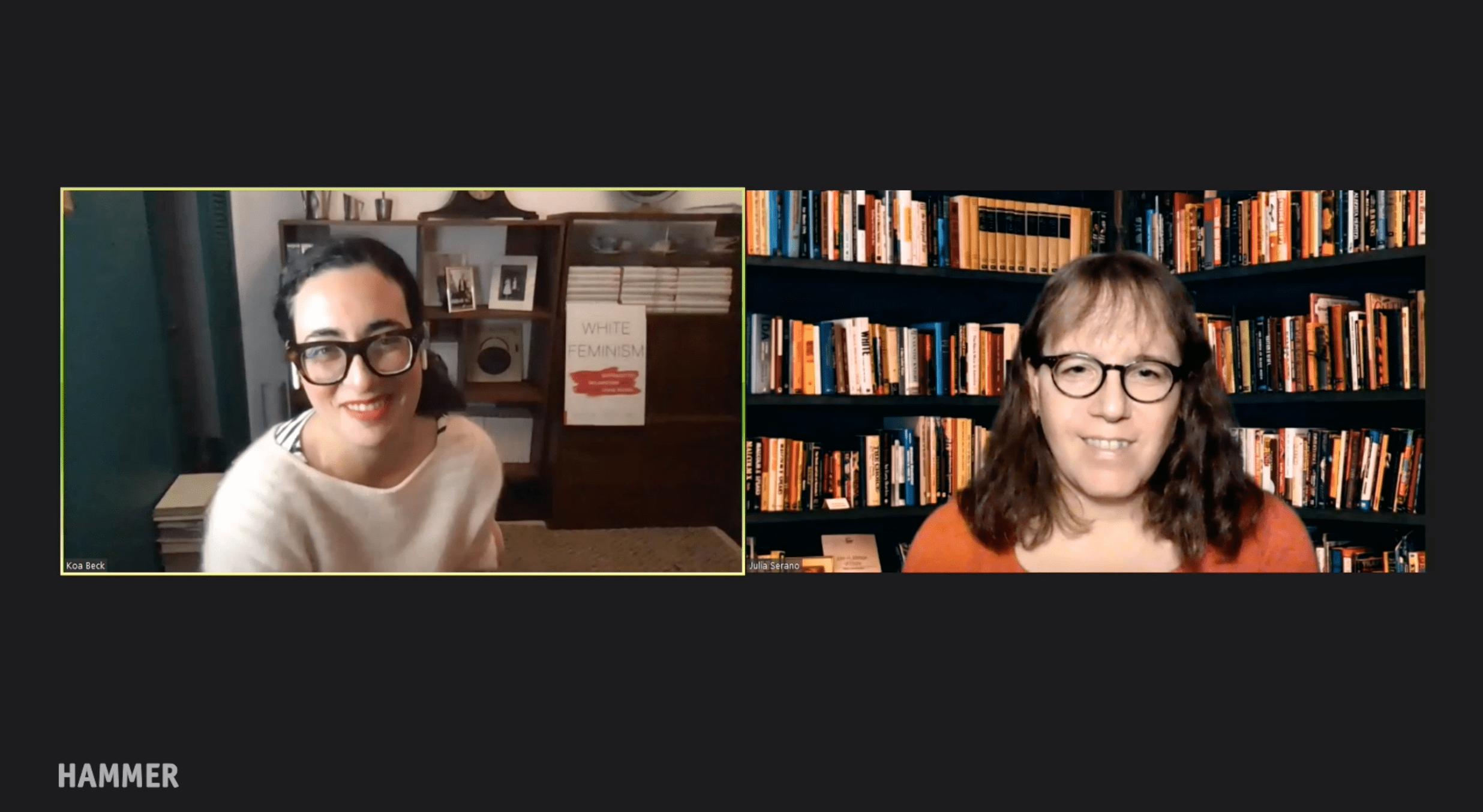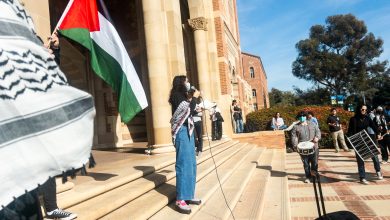The Shortcomings of Mainstream White Feminism and What We Can Do About Them

Image Description: A screenshot of a Zoom webinar shows the two speakers: Koa Beck (left) and Julia Serano (right). The two are pictured in front of bookshelves, and in Beck’s background a poster of her new book “White Feminism” is displayed. The UCLA Hammer Museum logo is on the bottom left.
Koa Beck and Julia Serano understand that, even with a growing public understanding of intersectionality, current feminist discourse still prioritizes problems that are historically attributed to a small, privileged subset of women. In a discussion hosted by UCLA’s Hammer Museum on Jan. 28, 2021, the two authors criticized a unilateral approach to feminism which inevitably excludes those who do not meet a rigid standard of traditional femininity: namely, those who are not white, cisgender, upper/middle class, non-disabled, or heterosexual.
The conversation was centered around Beck’s new book, White Feminism: From the Suffragettes to Influencers and Who They Leave Behind, which was published on Jan. 5, 2021. Beck is the former editor-in-chief of feminist commentary website Jezebel and co-host of the segment “The #MeToo Memos” on WYNC’s morning radio show The Takeaway. Her past works on contemporary American feminism have also been extensively praised. Beck emphasizes that she was heavily influenced by Serano, an activist and biologist, who Beck invited to join the conversation and relate White Feminism’s takeaways to her own experiences. Serano is also an acclaimed writer, best known for her books Whipping Girl, Excluded, and Outspoken. Throughout the hour-and-a-half discussion that was open to the public, which also included a Q&A portion, Beck and Serano drew on their own lived experiences as LGBTQIA+ women to highlight the dangers of monolithic femininity and offer potential solutions to build inclusive feminist spheres that aren’t performative.
Beck and Serano began with dialogue on white feminism in general and how it only acknowledges the forms of oppression that are experienced by white, cishet women. They emphasized that this framework inherently blames those whose identities don’t conform to this norm — whether it be along the dimension of race, class, gender, sexuality, or ability. The root of this exclusionary feminism is the capitalist idea that if someone gains something, someone else has to lose something. For example, Serano specifically brought up that because trans people do not meet the standard of traditional femininity, white feminists view a small shift in language like “women who menstruate” to “people who menstruate” as something that threatens their own femininity. Beck related this to the rise of Trans-Exclusionary Radical Feminists (TERFS). She stated that white feminists’ strong anti-trans politics are not an accident or a blindspot but rather “indicative of their ideology of feminism…who it’s for, and who it protects.” It’s a take on feminism that isn’t meant to be expanded because it is rooted in deep heteronormativity, rigid gender expectations, and the fear that inclusivity will take something away from them.
How do we create a feminist movement that is meant to be expanded and inclusive then? To Serano and Beck, it starts with challenging the conventional meaning of femininity. Femininity is viewed as frivolous and ornamental, while masculinity is viewed as practical and serious. If we can strip away these connotations and appreciate the diverse forms of feminine expression, we can empower femininity on a mass scale that includes everyone. The next step is to steer the focus away from just women, which makes feminism about a traditional identity that not everyone resonates with. Instead, they advocate for focusing on issues that impact all people who move about the world as feminine — whatever that may look like. This strategy embraces all identities and simultaneously dismantles the illusion that justice and equality for one group can only be achieved at the expense of justice and equality for another.
When we recognize that, unfortunately, white feminism remains pervasive in contemporary discourse, we can start taking tangible steps toward widespread inclusivity on the ground. “There are a lot of ways to be in the world,” Serano emphasized at the end of the discussion. If feminism is to truly achieve gender equality, it must include diverse manifestations of gender. By empowering the vast diversity of feminine gender expression and not just the conventional presentation of femininity that is celebrated in our society, we can build a feminist movement that honors all the ways in which people exist.
Beck is on Instagram (@koabeck) and Twitter (@Koalani). Serano is on Twitter at @JuliaSerano.




